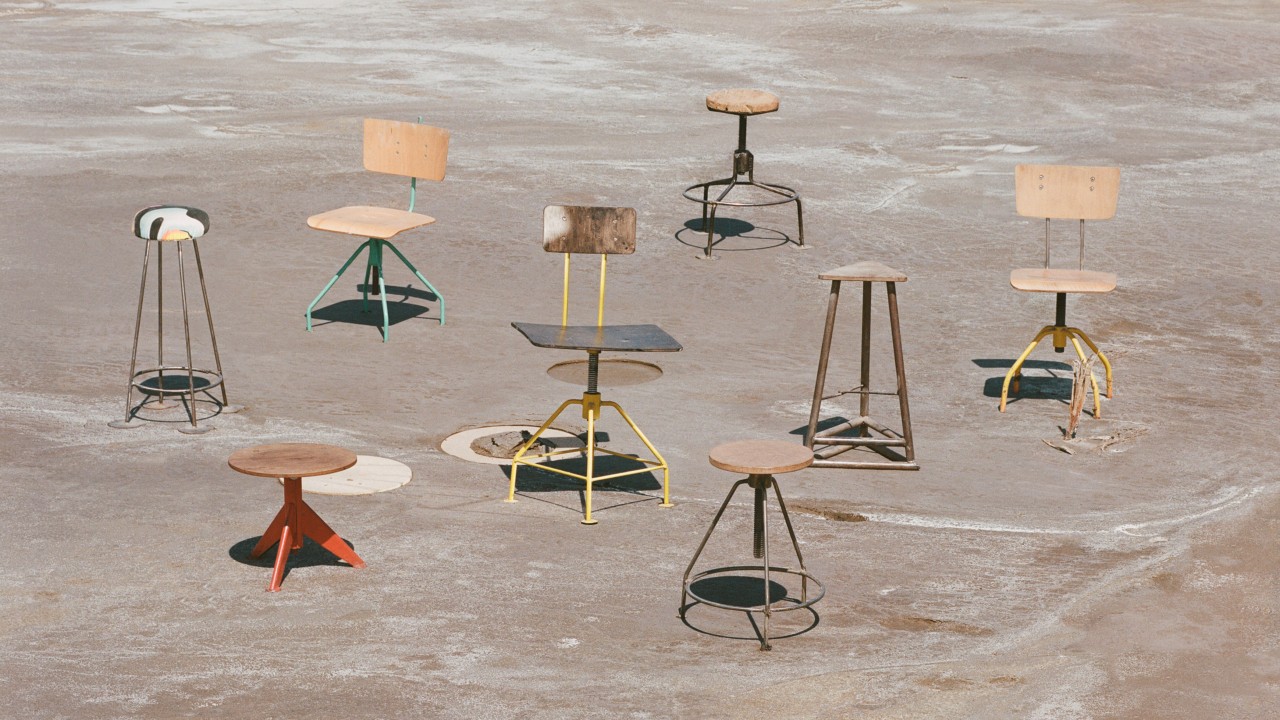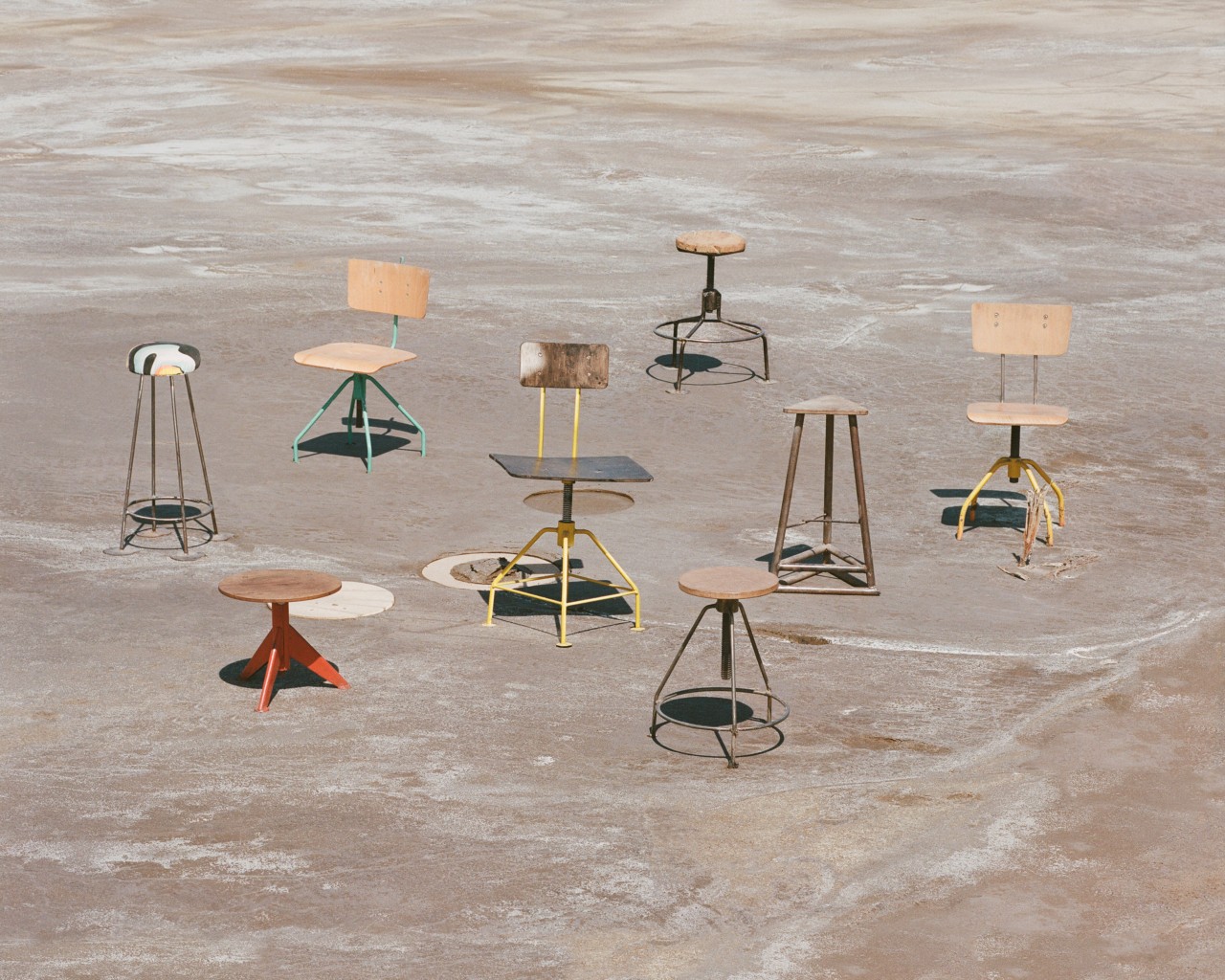

Photograph by Synchrodogs / Connected Archives
Words by Sydney Gore
Last November, mega-influencer Emma Chamberlain uploaded a PSA about purging her closet on YouTube.
“I really thought having a closet full of clothes could bring me joy,” she says in a voiceover. “And then I had a moment of clarity.” Up until that point, the 23-year-old explained, she had been stuck in an overwhelming cycle of “making space for all the wrong reasons.” But once Chamberlain purged the majority of her closet, she found peace—as did many other celebrities who started turning stoop sales into spectacles. It didn’t take long for other Gen Zers to follow suit and post their own purges on TikTok and Instagram.
Though the trend isn’t entirely new, it has ramped up in recent months. Already in 2018, award-winning author Geraldine DeRuiter named “American Apocalypse Purging” as the “hot” decluttering trend of the year. “Imagine the hours you’ve spent sifting through overstuffed drawers trying to find what you need,” she wrote in a blog post. “Now you can use that reclaimed time to contemplate your wasted existence. You were once nothing but potential.”
Today, purging feels like the ricochet of cluttercore: a symptom of the panic shopping that drove consumers to buy into trends during the pandemic at unprecedented rates. It was fun when we were looking to escape the COVID-19 news cycle, but now everyone is taking inventory of just how much they accumulated over the past five years—and nobody likes what they see. I mean, who wants to be triggered by the sight of wiggly furniture, corn stools, and disco balls?
The era of the “haul” may not be over just yet, but it is finally facing a reckoning—and climate anxiety has something to do with it. As the climate crisis accelerates and overconsumption becomes increasingly harder to ignore, many are reexamining their relationship to their belongings and the values they carry. Letting go, experts say, is no longer just about clearing space. It’s about confronting our emotional and cultural attachment to material things, and making choices that reflect a slower, more grounded way of living.
The rise of purging and return of minimalism began creeping into popular culture as COVID-19 lockdowns started to ease, leaving many grasping for order in an unrecognizable world.
Homes that once served as private sanctuaries turned into offices, gyms, and public settings for Zoom calls and team meetings. Stripped of outside distractions, what was once easy to dismiss—piles of papers, unused furniture, forgotten objects—started to feel intrusive; a reminder of mental and societal overload. Paige Geffen, a Santa Fe-based interior designer and somatic practitioner, sees the rise of purging as a way of coping with crisis. “People do this, unknowingly when they’re trying to rebuild what’s going on internally,” she said. “If we need to change, a really great way to do that is to purge, get rid of, and bring in new things because our perspective shifts.”
That desire for control, experts suggest, may also be shaped by a broader anxiety about the state of the planet. The act of simplifying—owning less, wasting less—offers a tangible, if symbolic, form of resistance. It’s a way of asserting agency in a world that feels increasingly precarious. Purging is like gaining “some semblance of control in a really unstable culture,” Geffin said.
Author and advocate Christine Platt believes that adopting a minimalist lifestyle starts with a single question: Why? Why are we attached to certain things, and why is it so difficult to let them go? Only by confronting these questions, she said, can people start to disentangle from habits of material excess.
“I had to need it, I had to use it, and I had to love it. I couldn’t look at those three things independently.”
“There is a very weighted burden that comes with inherited clutter, particularly for Black and Brown folks, because many of us are first generation and to be able to have this luxurious life is a privilege,” said Platt, author of The Afrominimalist’s Guide to Living with Less, and whose forthcoming book Less Is Liberation comes out later this year. “We understand how hard our ancestors worked for things, what they went through to acquire what they did for us to be where we are, and so some of those pieces hold even more weight.”
For Platt, healing those attachments requires forgiveness: for overconsumption, for survival strategies born of scarcity, and for internalizing a culture that equates worth with ownership. “We’re all somewhere on the spectrum of grief and healing,” she said. Her method—“need, use, love”—became a mantra. “I had to need it, I had to use it, and I had to love it. I couldn’t look at those three things independently.”
This was the approach that Amanda Chantal Bacon adopted when she moved her family of four from Los Angeles to Montecito, California, in 2021. “There’s an energetic pull on you from stuff, so there’s something really freeing about getting rid of most of it,” she said. Before becoming a mother, the Moon Juice founder maintained a fairly minimalist lifestyle—so she was outdone by the length of time it took to go through her family’s “enormous amount of stuff,” which included crystals, books, clothes, pots, pans, and jars of honey.
“My house that we moved out of was really the first time in my life that I attempted making a home,” Bacon said. “There’s a healthy place in between a mattress on a floor and a home that can be packed up in a car to a home that takes several months to disassemble.”
New York City-based interior stylist Colin King agrees. “Our spaces are one thing that we can control,” he said. After moving out of his Tribeca loft into a new apartment in Chelsea that couldn’t fit most of his possessions, King hosted a tag sale to part ways with everything. “For me, letting go of a lot of this stuff was trying to make way mentally, emotionally, and physically for the next chapter. There is a sense of gratitude for a place that gave me so much.”
These days, King lives by a simple principle: The less you own, the less that owns you. “Decluttering is more than a passing trend,” he said. “It’s a deeper understanding of what we truly need as human beings.”
That deeper understanding is now colliding with a broader reckoning: how the things we buy and throw away contribute to a mounting environmental crisis. Today more than ever, we’re challenging ourselves and each other to be more selective about what we’re bringing into our homes.
Melissa Lee, founder of multidisciplinary design firm Bespoke Only, points to the current sociopolitical landscape as the underlying driver. When little else feels within our control, decluttering offers the illusion of order. “Purging is like a detox, it’s really good for your body and your home,” she said. It’s why people looking to get rid of the emotional baggage often turn to feng shui, energy mapping, deep cleaning, and other decluttering detoxes.
But this urge to simplify doesn’t happen in a vacuum. It unfolds against the backdrop of an increasingly wasteful design economy. Geffen notes that endless streams of interior inspiration—from social media influencers and accelerating trend cycles—have created a kind of aspirational churn. “We need to be designing more around what makes sense for us personally,” she said. “Rather than, ‘Look at this Pinterest image and let me mimic this.’”
The rise of fast furniture, which is cheap, trend-driven, disposable, is only intensifying the problem. Built for short-term use, many of these pieces are made from materials that degrade quickly, if they were ever meant to last at all. Americans throw away more than 12 million tons of furniture each year, a figure that is expected to rise as accelerated production meets bottom-barrel pricing. What feels like personal clutter is, collectively, a planetary burden.
“We are in an industry that is creating more and more waste,” Lee said, “so when we are trying to design remodels we always want to think about what we bring into the space. Things have to matter in one way or the other, we can’t just fill the space for the sake of it.”
Rising house prices are making the problem harder still. With homeownership increasingly out of reach for many, especially millennials, temporary rentals foster a culture of impermanence—and with it, impermanent furnishing. Instead of investing in high-quality pieces meant to last decades, renters often turn to quick fixes designed to fit short-term spaces and low budgets. The result is a cycle of disposability that treats furniture like fast fashion: cheap, replaceable, and ultimately unsustainable.
It doesn’t have to be this way. “[People] are buying things that serve a purpose for a very finite time, ” said King, who advocates for upcycling as a more sustainable alternative to constant replacement. “There’s an anxiousness to get to the finish line, but they’re actually missing all the beauty and the process of [curating a space with intention]. There is so much fun in waiting for the perfect piece to appear and not filling every corner.”
Minimalism once promised freedom through simplicity. But for many, its early aesthetic—barren rooms, stark white walls, strict aesthetic rules—felt more alienating than liberating.
Platt, who began her minimalism journey seven years ago, remembers confronting a landscape of neutral palettes and stripped-down spaces that felt both exclusive and severe. “It seemed so unattainable because it was so white—literally and figuratively,” she said. “Who wants to live with one fork, one knife, one spoon? I was like, ‘I feel like I’m in an asylum.’”
Platt’s discomfort points to a broader shift. Minimalism is evolving from cold austerity to something warmer and more layered. “Warm minimalism,” as it’s come to be known, incorporates subtle textures, natural elements, and sentimental objects. Shane Charles, founder of Mild Sauce Studio, sees this evolution as a departure from rigid rules and moves toward “creating a home that feels inviting and personal.”
“We equate minimalism with loss. But it’s one of the most abundant ways that I have ever lived my life.”
The change is not just aesthetic; it’s emotional, even existential. In a time defined by overwhelm, this new form of minimalism is about slowing down, choosing deliberately, and designing spaces that soothe rather than stimulate. “The less extreme we are with these trends and things, the more grounded that we can be,” said Geffen. “It reflects what’s going on with us in our nervous systems, and then how we can show up for ourselves, for each other, for the world.”
The climate crisis adds new urgency to the minimalist ethos. As consumer habits come under increasing scrutiny, the choice to own less—and to shop more thoughtfully—takes on a political dimension. Durability over disposability is not just a personal preference; it’s a form of resistance to a system built on waste. “It sounds lofty,” Geffen said, “But I absolutely believe that every little action that we do or how we’re relating to ourselves, to our friends, to our families, to our spaces, impacts everything.”
Ultimately, the rise of purging—of letting go of impulsive accumulation and material excess—and opting for minimalist life choices instead, isn’t about deprivation or sacrifice. It’s about abundance. “We equate minimalism with loss,” she said. “But it’s one of the most abundant ways that I have ever lived my life.” In a world saturated by stress and excess, minimalism offers something quietly radical: a calmer, slower, more intentional way to live—and a reminder that fewer, better choices aren’t just better for our homes. They’re better for the planet, too.
Why 2025 Is Becoming the Year of Living With Less